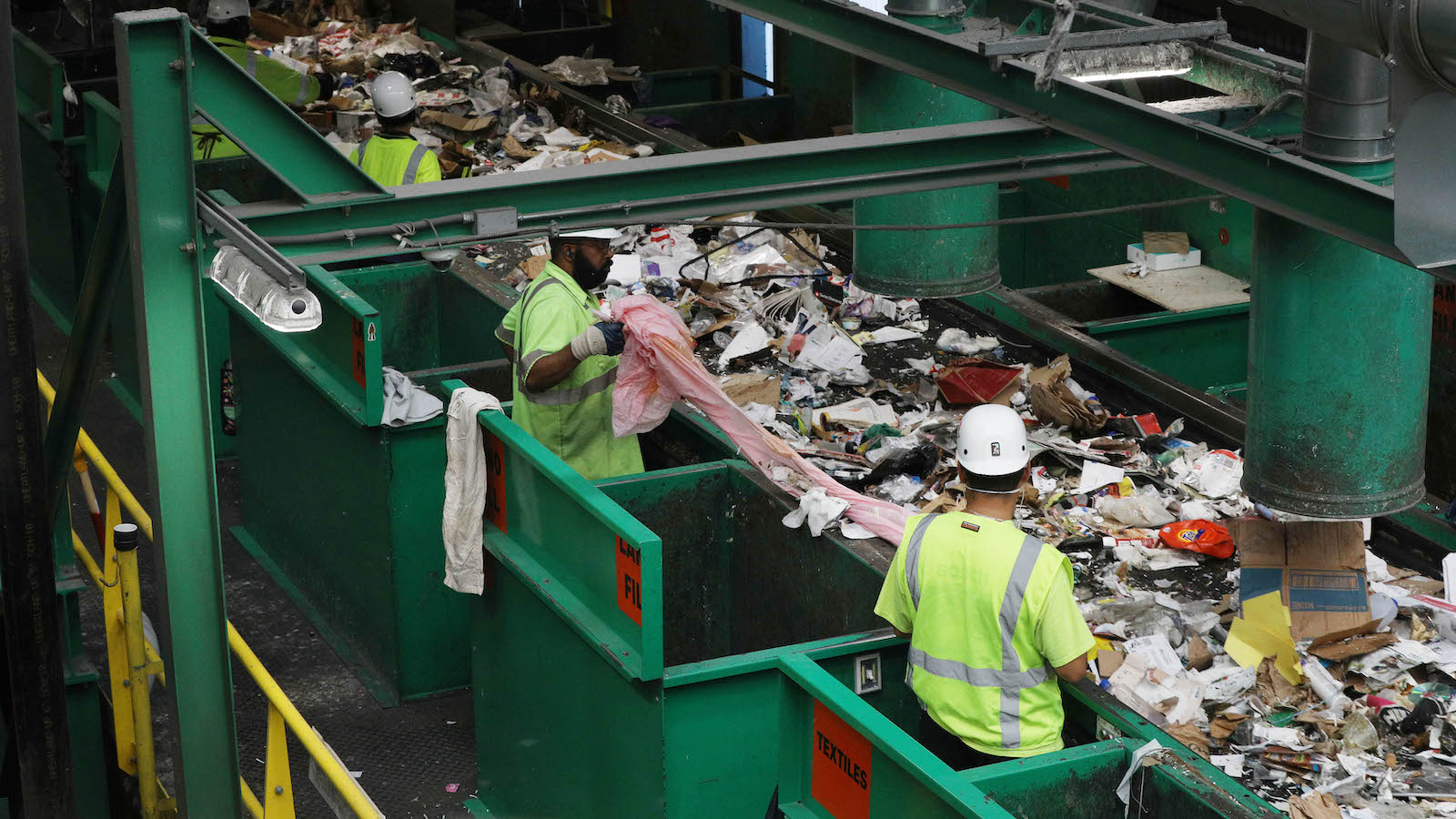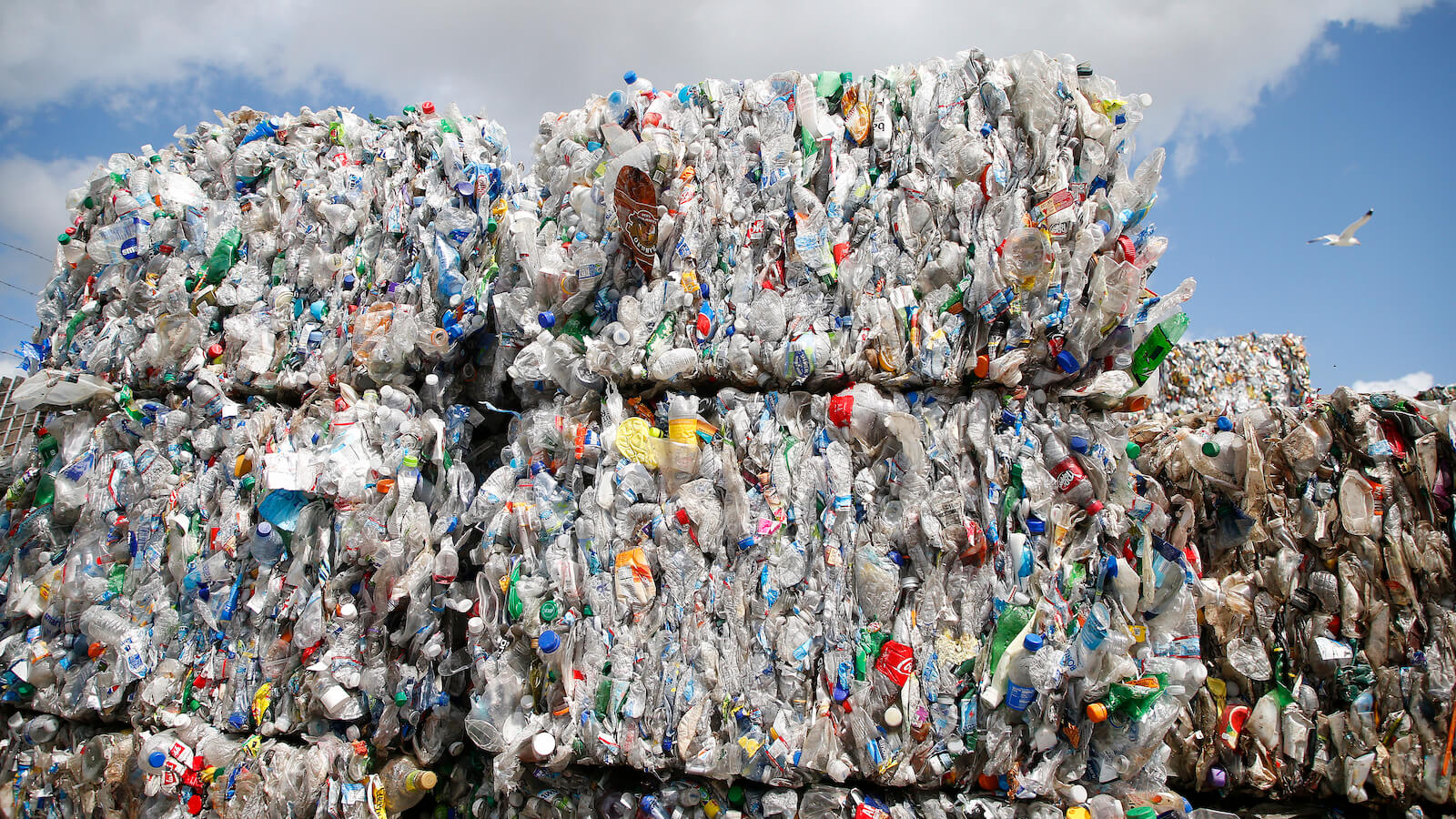Confused about which products to toss into the recycling bin? You aren’t the only one. The ubiquitous recycling symbol is everywhere, even on packages that cannot be recycled at the vast majority of recycling facilities.
Last week, California lawmakers took a step toward remedying that confusion. Senate Bill 343, which passed the state Assembly on Wednesday and cleared the state Senate on Thursday, would ban companies from displaying the “chasing arrows” symbol on types of plastic that aren’t regularly recycled throughout California and turned into new products.
“This is ultimately a truth-in-advertising concept,” Ben Allen, a Democratic state senator who sponsored the bill, told Grist. According to Allen and other proponents, the bill would clear up confusion among consumers who have wrongly — although understandably — assumed that the recycling symbol indicates recyclability. “So many of the materials that people put into their blue bins thinking they’re recyclable — they’re not recycled,” Allen said. “Consumers ought to be able to trust the labels.”
The bill was introduced earlier this year as part of a package of proposals to address shortcomings in California’s recycling and waste management system. In 2020, the state announced it had failed to meet its goal to reduce, recycle, or compost 75 percent of its solid waste by the end of the year — it had reached only 37 percent in 2019. In 12 bills, Allen and several other state lawmakers aimed to restrict the use of polystyrene foam packing peanuts, increase industry payments to bottle recycling centers, better regulate California’s exportation of plastic scraps, and more. The most expansive bill, Senate Bill 54, would have required all single-use disposable packaging to be recyclable or compostable by 2032. Allen tabled that bill in May so he could continue revising it, but most of the others are still being considered by legislative committees.
The labeling bill has moved forward, however, and is expected to be signed into law by California Governor Gavin Newsom.
Environmental advocates have lauded the bill as an important step toward addressing the global crisis of plastic pollution. Worldwide, only 9 percent of plastic waste has ever been recycled — most of it ends up in dumps or landfills, or as litter. On the way there, however, plastic items often make a pit stop in recycling facilities; due in part to the ubiquitous recycling symbol, consumers mistakenly send nonrecyclable items there believing that they will be repurposed into new items. The corporation Waste Management has estimated that, in the U.S., 1 out of every 4 items placed in a recycling bin is unrecyclable in a curbside pickup program, and some facilities have said that their share of nonrecyclables is even higher. At one facility in Phoenix, Arizona, officials have estimated that 30 percent of the material they receive each day is contaminated with nonrecyclables like plastic bags, which clog machinery and can cost the city $1 million a year in lost time.

According to John Hocevar, director of ocean campaigns for Greenpeace USA, the plastic industry bears much of the blame for creating this massive and growing problem, partly owing to what Hocevar called its longstanding insistence that “everything can and should be recycled.” Companies’ overuse of the recycling symbol has greenwashed customers, he said, misleading them about the recyclability of plastic packaging and products. “We can’t have corporations lying to people.”
Plastic manufacturers and trade groups have predictably resisted the labeling bill. In a letter to Allen penned in March, the Plastics Industry Association, or PIA, argued that the chasing arrows symbol was never intended to be an indicator of recyclability. Rather, the symbols — which include the numbers 1 through 7, a grading system designed by PIA’s predecessor in the 1980s — were simply meant to communicate what kind of plastic resin was used in a given product. PIA called the bill “severely restrictive” and suggested alternatives to regulation, including a “best practices” workbook to help manufacturers use more recycled content.
PIA’s letter also insisted that the new guidelines would “increase the material going to landfill and significantly decrease recycling,” although the bill will only restrict recycling symbols on items that are already not being recycled. Hocevar called the claims “rich,” noting that they were ultimately unpersuasive to California lawmakers. In response to a request for comment, PIA sent Grist links to a statement and testimony.
When the bill goes into effect in January 2024, industry groups have noted that it may create a challenge for manufacturers, which will have two different labeling requirements to adhere to: the strict California regulations, and the national ones, which still allow the chasing arrows to be stamped onto virtually any piece of plastic. According to PIA, such a situation will not be “feasible or realistic.”
Allen and others have said that the bill presents an opportunity for California to lead the nation toward stronger recycling policy — much how the state’s fuel-efficiency policies tend to set a de facto national standard, since automakers don’t want to produce different cars for the California market and the non-California market. For plastics, Hocevar said, “let’s have one consistent, strong approach for the whole country. The California bill is a great model for the national bill we need right now.”
Other policies are needed, Allen said, to address the nation’s mounting plastic problems. He’s ultimately aiming for the passage of Senate Bill 54 — the more comprehensive ban on nonrecyclable, noncompostable, nonbiodegradable plastic — but in the meantime, he’s hopeful that the labeling bill will begin to move the needle. “We are just burying ourselves in single-use plastic waste,” he said. “We’ve got to move toward more environmentally sustainable products.”
Editor’s note: Greenpeace is an advertiser with Grist. Advertisers have no role in Grist’s editorial decisions.
This story has been updated to include PIA’s response to Grist’s request for comment.



